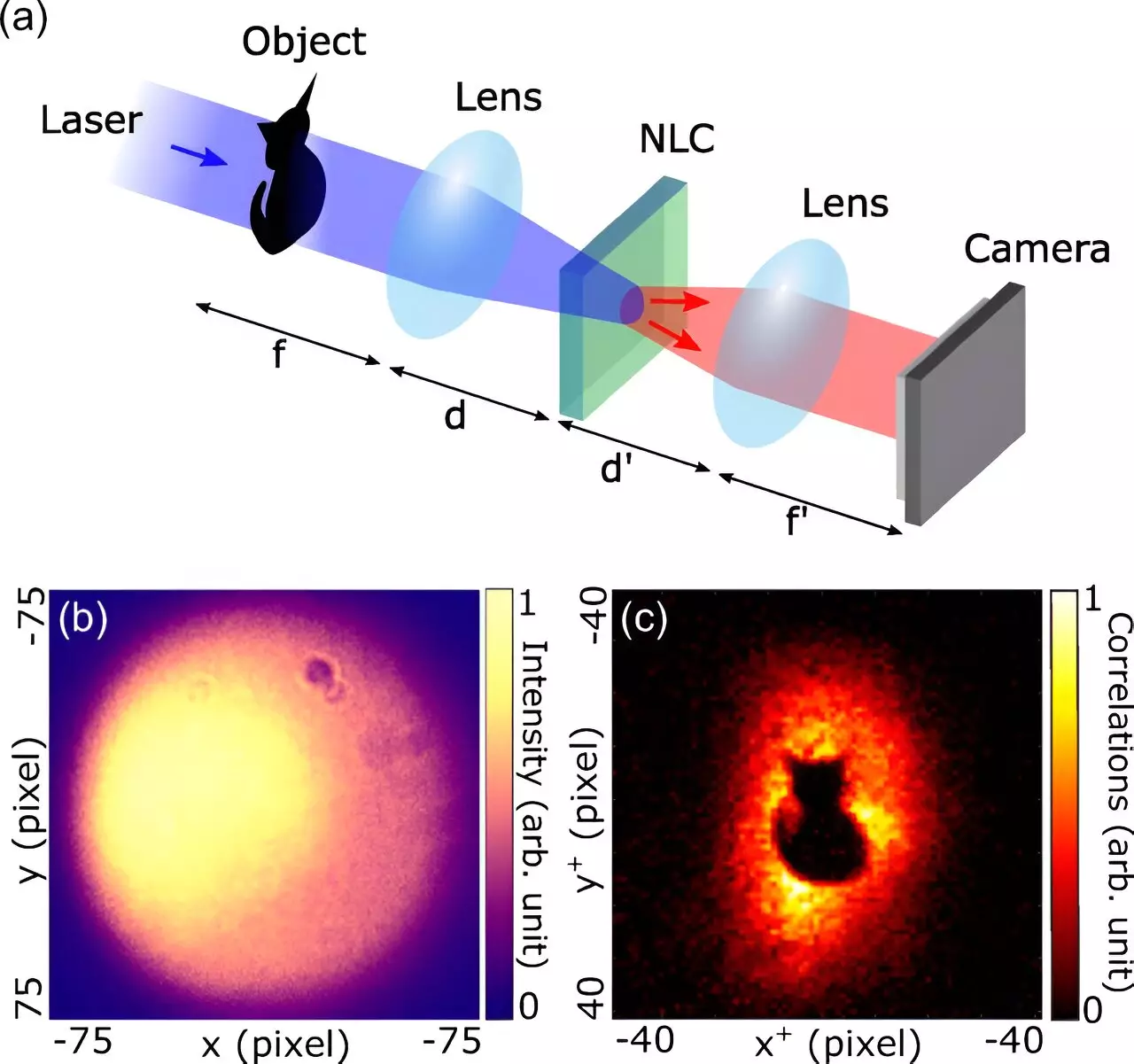Recent advancements in the field of quantum photonics have opened new avenues for imaging technology. Researchers from the Paris Institute of Nanoscience at Sorbonne University have made significant progress in encoding visual information into the quantum states of photon pairs, which remain hidden from traditional imaging methods. Their findings, published in the respected journal Physical Review Letters, hold promise for a range of applications spanning quantum computing, cryptography, and beyond.
Central to this breakthrough are entangled photons, particles that exhibit interdependent quantum states, making them essential for various applications in quantum technologies. These photon pairs are generated through a process known as spontaneous parametric down-conversion (SPDC), wherein a high-energy photon from a laser beam is divided into two lower-energy, entangled photons. This generation occurs within a nonlinear crystal, and the resultant entangled photons become an effective medium for encoding complex information due to their unique quantum properties.
Despite the success of SPDC in producing entangled photons, many applications necessitate a specific arrangement and control of quantum correlations between these photons. By manipulating the characteristics of the pump laser, particularly its spatial configuration, researchers can tailor the properties of the entangled photons, setting the stage for innovative imaging techniques.
The groundbreaking method conceived by the Sorbonne researchers involves structuring the spatial correlations of entangled photons to visually represent objects. Their process starts with positioning the object to be encoded within a lens system that precedes the nonlinear crystal. A secondary lens captures the output, creating the potential for a typical imaging scenario. However, rather than witnessing a straightforward representation of the object, the researchers observed a uniform intensity on the camera owing to the random nature of entangled photon pairs generated through SPDC.
1. **Understanding the Experimental Framework:** The conventional two-lens system would usually allow an observer to see a darkened image of the object. Yet, once the nonlinear crystal is introduced into this setup, and the selected entangled photons are analyzed, it becomes evident that the spatial information is heavily concealed—an initial disappointment that reveals deeper insights upon closer examination.
2. **The Role of Spatial Correlations:** By capturing and analyzing the spatial correlations between the entangled photon pairs, distinguished patterns emerge, suggesting a concealed image. The researchers emphasized that reconstructing an image from these correlations demands sophisticated imaging technologies, including single-photon sensitive cameras and advanced algorithms to track coincidences in photon arrivals.
Chloé Vernière, the leading Ph.D. student behind the study, expressed excitement regarding the innovative potential of this technique. The process reveals an underutilized property of light—namely, spatial correlations—allowing for a novel way of capturing and interpreting visual data. Hugo Defienne, Vernière’s thesis supervisor, elaborated that such methodologies could lead to a radical transformation in cryptographic systems and imaging within scattering media.
The flexibility and relative ease of the new imaging principles hold substantial implications for the future of quantum communication. The research team is eager to explore how varying the properties of the crystal could enable the encoding of multiple images within a single photon pair beam. This capability could also facilitate the revelation of different images as the camera is maneuvered through diverse optical planes.
The study conducted by the Paris Institute of Nanoscience is a striking demonstration of how quantum mechanics can be harnessed to innovate imaging technologies. By embedding visual information within quantum correlations of entangled photons, researchers have unveiled a paradigm shift in potential applications ranging from secure communication systems to advanced imaging techniques in complex environments. As scientists continue to unravel the profound implications of such methodologies, the future of quantum imaging appears bright, brimming with possibilities waiting to be explored.


Leave a Reply